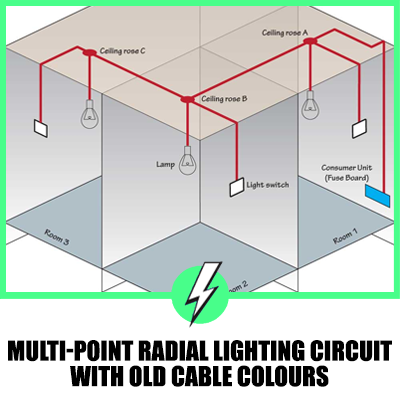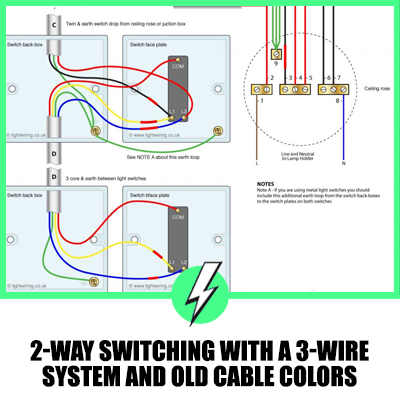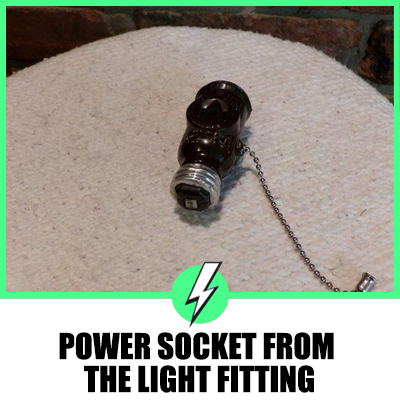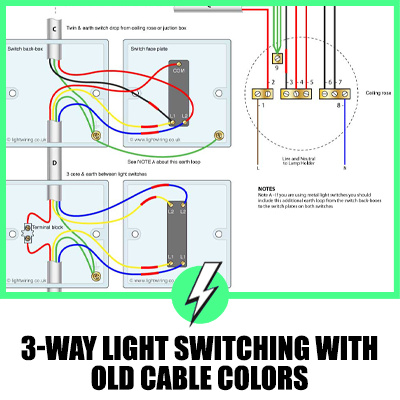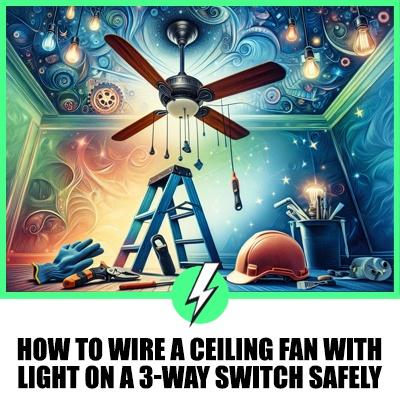2-Way Switching with Two-Wire Control in UK Wiring
Wondering how 2-way switching with two-wire control works in the UK and why it’s so popular?
This method allows for controlling a light from two places with just two wires, simplifying installations and reducing costs.
In this article, we’ll unpack the essentials of this setup, from its straightforward implementation to the safety precautions that need to be taken, especially in unique configurations like stairwells.
We’ll be covering:
- How does 2-way switching with two-wire control function?
What makes it different from the 3-wire system? - What are the safety considerations to keep in mind, particularly in configurations that might mix circuits?
- What are the advantages and limitations of this wiring method, especially concerning modern lighting solutions?
- Gear up for an enlightening exploration into this efficient wiring configuration.
Let’s get started!
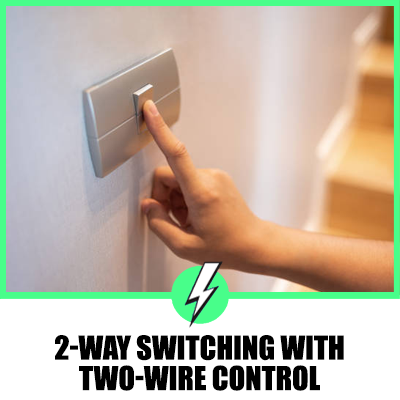
Contents
Overview of 2-Way Switching with Two-Wire Control
2-way switching with two-wire control is a simple yet effective wiring setup that enables users to operate lights or fixtures from multiple points within a room or building.
Unlike the 3-wire system, this configuration utilizes only two wires, making it more straightforward to install and understand.
2 way switching (two wire control)
Two-way switching (with two-wire control) is mentioned here as a point of reference, as it might be encountered in older properties.
However, it is not recommended for use. For new installations or when updating a two-way switch setup, opting for the three-wire control approach is advisable.
This type of two-way lighting circuit is more commonly found in industrial or commercial environments, particularly where the electrical installation utilizes trunking or conduits and employs single-core wires.

Downside(s) of the two wire control system
This approach if often referred to as a ‘cable saving method’ because it only needs a two wire control.
This is fine when executed correctly but here is what you need to look out for:
where this is used in a stairwell where you have a switch upstair and a switch downstairs there is the danger that the neutral and the live come from different lighting circuits. See Fi2 2.

Fig 2: Two way swtiching with 2 wire control (DON’T DO THIS)
The primary concern with this approach is safety, particularly when working on electrical installations.
For instance, when attempting to work safely by turning off the upstairs lighting circuit, one might mistakenly believe they are protected.
However, due to the way the wiring is configured, live wires can still be present, posing a significant risk if the downstairs switch is activated, inadvertently energizing the circuit all the way to the upstairs lamp.
To avoid such dangers, it’s crucial to isolate all lighting circuits before starting any work on them, especially if you’re unsure of the wiring setup.
It’s worth noting that this issue might not arise in scenarios like a long hallway where both switches are located downstairs and the neutral wire isn’t shared with another circuit.
But, this shouldn’t be assumed without verification.
Despite being a common suggestion on many DIY websites, the safety implications of this wiring method are often not sufficiently highlighted.
Beyond the immediate safety risks, there are other reasons to avoid this approach, which are not commonly discussed:
Induction Loops and RF Interference
Electrical currents generate electromagnetic fields. Normally, the design of twin and earth cables, where live and neutral wires are close together, mitigates this effect.
However, in the configuration described, the circuit could act as a large induction loop, potentially causing interference with devices like hearing aids, radios, electric guitars, and computer networks due to the extended path the current takes through the house.
Erroneous Tripping of Safety Devices
Using a neutral from a different circuit than the live wire can cause issues with modern electrical panels equipped with multiple RCDs or RCBOs, leading to unnecessary tripping of these safety devices.
Key Components and Connections
- Two Switches: Two 2-way switches are used in this configuration. One switch is typically located at the bottom of a stairwell or at the entrance of a room, while the other switch is installed at the top of the stairs or at a secondary location within the room.
- Two-Core Cable: A two-core cable, consisting of two individual wires, is used to establish connections between the switches and the light or fixture.
- Live: Brown or red wire
- Switched Live: Black or blue wire
- Lighting Point: The lighting point refers to the location of the light or fixture being controlled. It is connected to the switches using the two-core cable.
Switching Operation
The 2-way switch configuration with two-wire control allows users to control the light or fixture from either switch position.
When one switch is in the “on” position, the other switch can toggle the light off or on.
The live wire is alternated between the switches to control the flow of electricity to the light or fixture.
Advantages of 2-Way Switching with Two-Wire Control
- Simplicity and Cost-Effectiveness: The two-wire control system simplifies the wiring process, requiring fewer wires and components. This makes it a cost-effective solution for lighting control.
- Flexibility and Convenience: Users can operate lights or fixtures from multiple locations, providing flexibility and convenience within a space.
- Easy Installation: The simplicity of the two-wire control system makes it relatively easy to install, even for those with basic electrical knowledge.
Considerations and Limitations
It is essential to consider the limitations of the two-wire control system:
- No Neutral Wire: The absence of a neutral wire in this configuration may limit the compatibility with certain types of lighting fixtures, particularly those that require a neutral connection.
- Compatibility with LED Lighting: Some LED lighting fixtures may require a neutral wire for proper operation. It is crucial to ensure compatibility between the lighting fixture and the wiring setup.
Conclusion
2-way switching with two-wire control is a popular electrical wiring configuration in the UK, providing users with convenient control of lights or fixtures from multiple locations.
By understanding the key components, connections, and switching operation, individuals can install or modify lighting circuits using this system.
The simplicity, cost-effectiveness, and convenience offered by the two-wire control system make it a practical solution for many lighting applications.
However, it is important to consider any limitations, such as the absence of a neutral wire, when applying this configuration to specific lighting fixtures or technologies.
